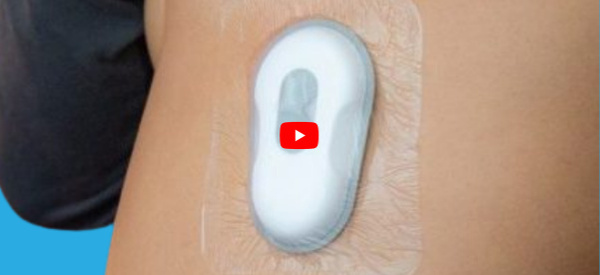Medtech
Another Wearable Patch Listens for Signs of COPD [video]
We recently told you about AeviceMD, a wearable stethoscope that continuously monitors for abnormal lung sounds that may be signs of asthma and Chronic…


We recently told you about AeviceMD, a wearable stethoscope that continuously monitors for abnormal lung sounds that may be signs of asthma and Chronic Obstructive Pulmonary Disease (COPD). That device has some notable competition with the Remote Electronic Stethoscope Platform (RESP) biosensor. This FDA-cleared device detects wheezing, coughing, and rhonchi (low-pitched musical sounds similar to snores that often indicate secretions in a person’s airway). The RESP biosensor recently took home a trophy in the Tools that Deliver Care category at the ATA Telehealth Innovators Challenge.
Developed by the Philadelphia-based medical technology company Strados Labs, the RESP biosensor is part of the Strados Respiratory Care Platform. The remote monitoring solution has clinical teams that review lung sounds to diagnose issues and care for patients. Machine-learning algorithms help with early detection and predictions of worsening respiratory diseases. The platform monitors patients in either hospital settings or at home where they can connect with a doctor remotely via telehealth. And it’s HIPAA compliant; the platform stores a patient’s encrypted data on a connected app, and only authorized users can access the data.
Is continuous monitoring superior to intermittent lung monitoring with a traditional stethoscope? Strados conducted a study with researchers from New York Medical College and others to compare different methods of auscultation (the act of listening to lung, heart, and other sounds). During the study, the accuracy of the continuously monitoring RESP went up against the intermittent use of an FDA-cleared electronic stethoscope in wheeze detection among 43 patients. The results? Continuous monitoring beat intermittent monitoring; 85% of RESP’s continuous recordings captured wheezes, while intermittent auscultation detected only 77.5% of the wheezes in patients.
This affordable, accessible technology could feasibly save millions of lives. The American Lung Association (ALA) estimates that up to 18 million Americans may have undiagnosed COPD, which includes emphysema and chronic bronchitis. According to the ALA, this chronic lung disease is the third leading cause of death in America. Yet many dismiss the signs of COPD. ALA spokesperson Meilan King Han says, “When short of breath, many patients may not mention the symptoms to their doctor, assuming that this is just a natural part of aging.”

ETF Talk: AI is ‘Big Generator’
Second nature comes alive Even if you close your eyes We exist through this strange device — Yes, “Big Generator” Artificial intelligence (AI) has…
Apple gets an appeals court win for its Apple Watch
Apple has at least a couple more weeks before it has to worry about another sales ban.
Federal court blocks ban on Apple Watches after Apple appeal
A federal appeals court has temporarily blocked a sweeping import ban on Apple’s latest smartwatches while the patent dispute winds its way through…














